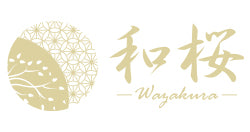General
How can I get a user guide for products?
Are Wazakura's products all made in Japan?
Yes. Our tools are all 100% made in Japan by skilled local artisans. These artisans and blacksmiths use thesame techniques passed down by generations. As a result, the tools are carefully designed and improved over-the-centuries with every single detail taken into account. So you can have in your handsincredible and unique pieces that are much more than just tools. Additionally, in order to
ensure the quality of tools, we scouted around Japan for responsible skilled craftsmen, in the cities of Sanjo (Niigata Prefecture) and Tokoname (Aichi Prefecture). In order to deliver high quality and durable products to customers all over the world, we are collecting products from all over Japan such as Sanjo and Tokoname.
Which tools would you recommend for a beginner?
For beginners, we recommend our 3PCS Bonsai Garden Tool Starter Kit with scissors, tweezers and a broom.
[Bonsai scissors]
This is the most necessary item for pruning bonsai. It is used for trimming of small branches, twigs, and buds.
[Tweezers]
Ideal for removing dead leaves, insects and weeds or applying moss on your bonsai plants.
[Broom]
It is useful for cleaning up dead leaves and smooth out the topsoil.
You will need branch cutter, wire cutter, and wire.
[Concave Branch Cutter]
This is a must-have item for pruning thick branches that cannot be cut with bonsai scissors.
[Wire Cutter]
Cutting wires of alumminium or copper. The rounded ends ensure your bonsai tree won't be damaged during wiring work.
[Wire]
Wiring is a important technique used to train and style bonsais. Wrap wire around the branches or trunk of a tree to reposition it to your liking.
Bonsai Scissors
The blades broke when I cut a branch with scissors.
Cutting thick branches with scissors can cause the blade to break. When cutting twigs, do not use the tip of the blade as much as possible, and use the part close to the base of the blade.
My scissors have rusted although it is made of stainless steel.
Stainless steel is not a "rust-free metal" but a "rust-resistant metal". After use, wipe off any moisture or dirt on the blade or handle with a cloth. If it is very dirty, use the sap eraser to remove sap, rust and stain.
Bonsai Cutter
How should I take care of my Bonsai cutter?
1. Clean dirt, sap or any moisture after each use. If necessary, use a rust eraser to remove light coatings of rust.
2. Wipe it dry with clean rag, and then oil to protect the metal from corrosion regularly. Ideally, blades should be cleaned and oiled after each use, using a mineral or petroleum low viscosity oil.
For special cares, please see our Bonsai Tool Maintenance video:
Why don't the blades of the root cutter overlap?
The reason why the blades of the root cutter are engaged is that the sharpness is better when the blades are engaged.
The blades broke when I cut a branch with a concave cutter.
Cutting thick branches may cause damage to the blades. Suitable cutting capacity is 5/16" to 1/2" (8mm to 13mm).
What is the difference between concave branch cutter and knob cutter?
Concave Branch Cutter is ideal for pruning/removing bonsai branches in a way that the wound heals quickly and with little scarring. On the one hand, the knob cutter removes knobs from the trunk or branches. The circular cut produces a hollow that heals quickly with a minimum of scarring.
Bonsai Accessories
The color of the copper wire differs depending on the products.
When processing copper wire in a kiln, the color of the copper wire may differ due to some unevenness depending on the distance from the fire source, but there is no problem with the quality of the product.
使用向左/向右箭頭操作播放投影片。如使用行動裝置,請向左/向右滑動
